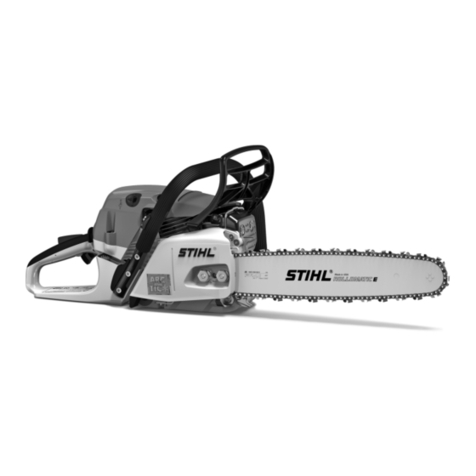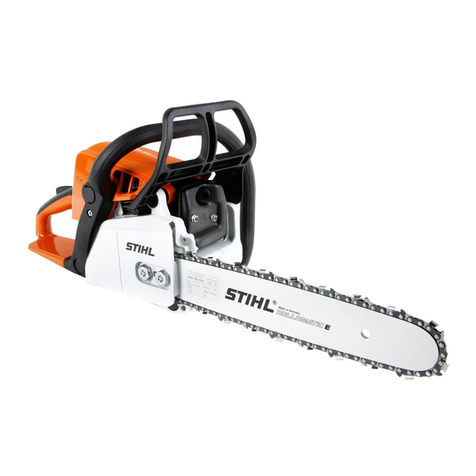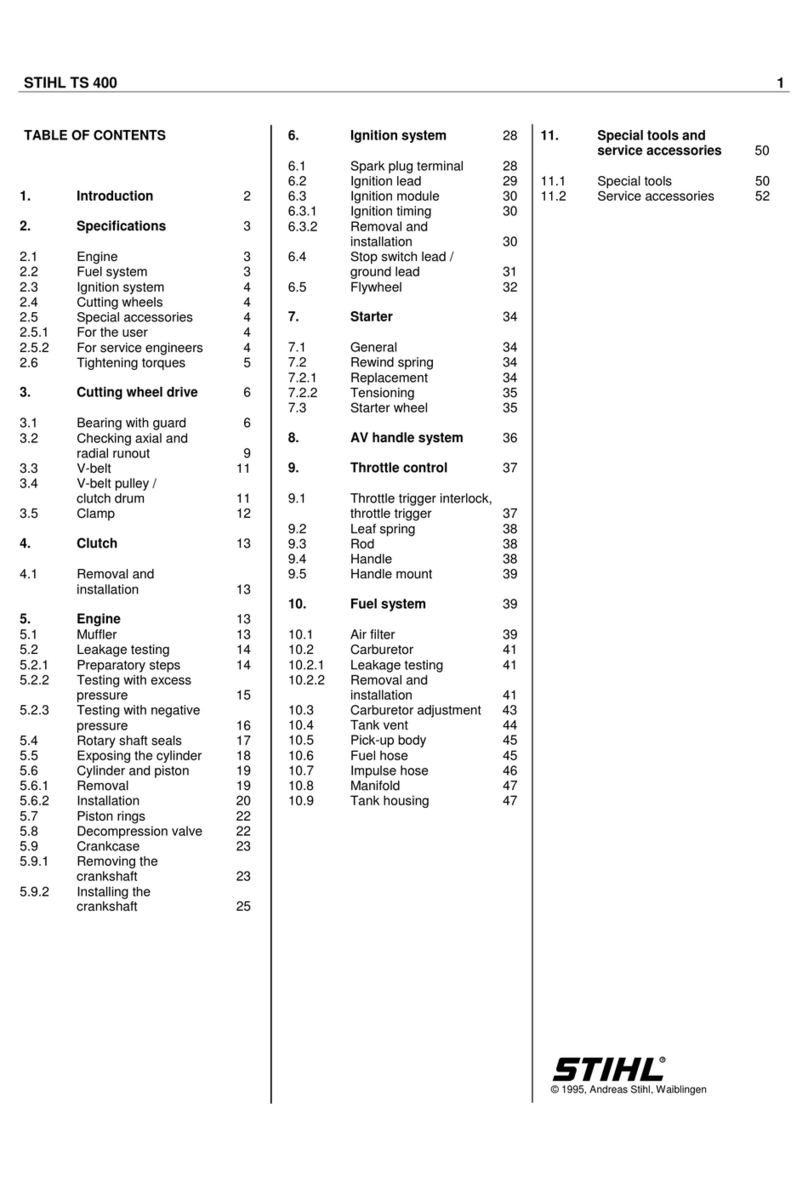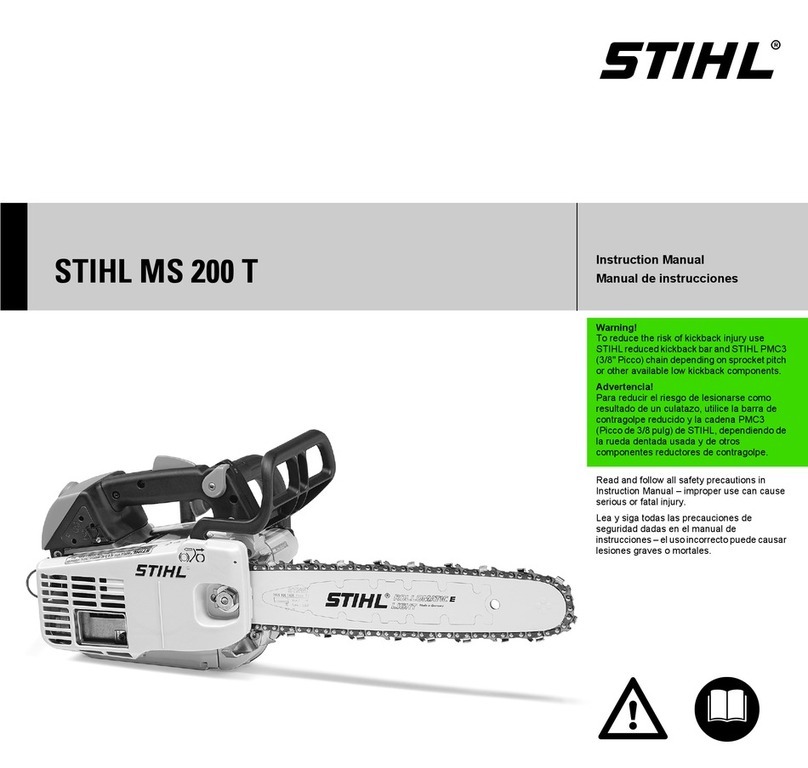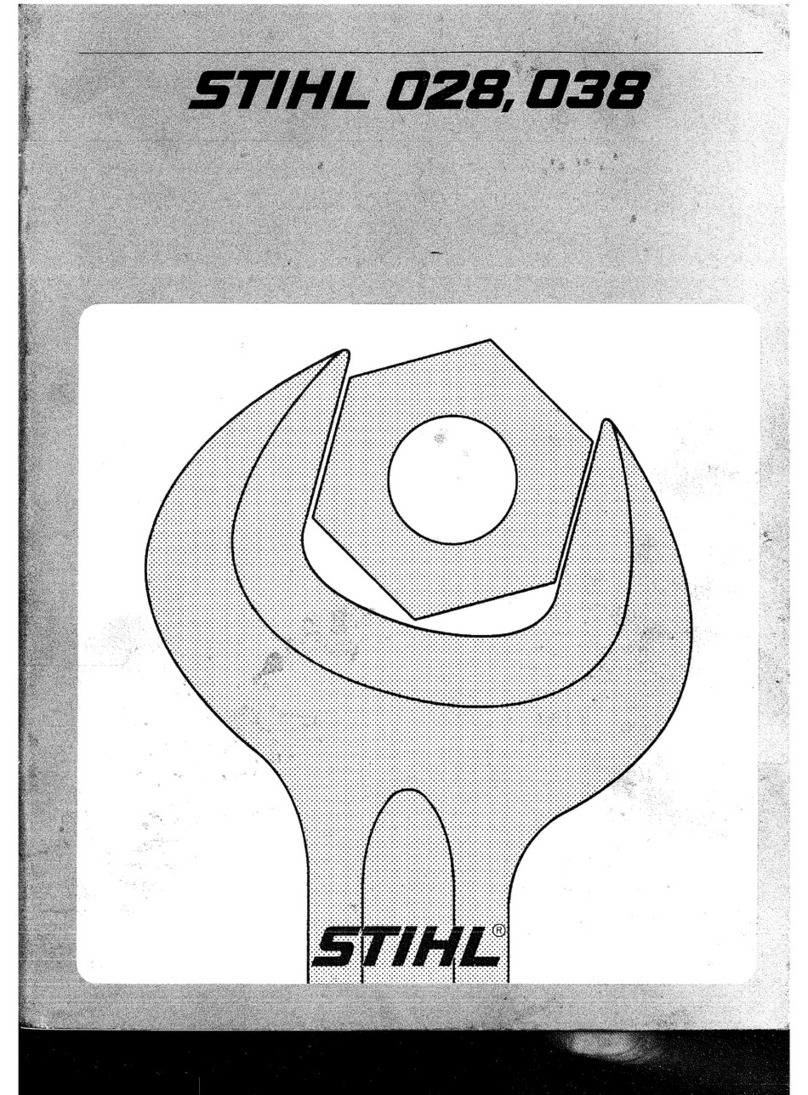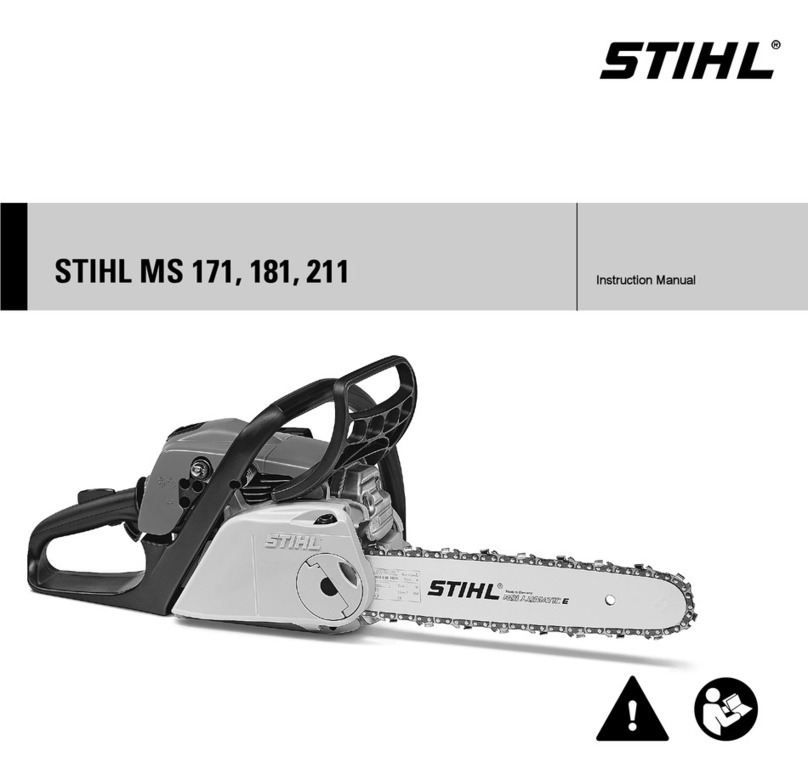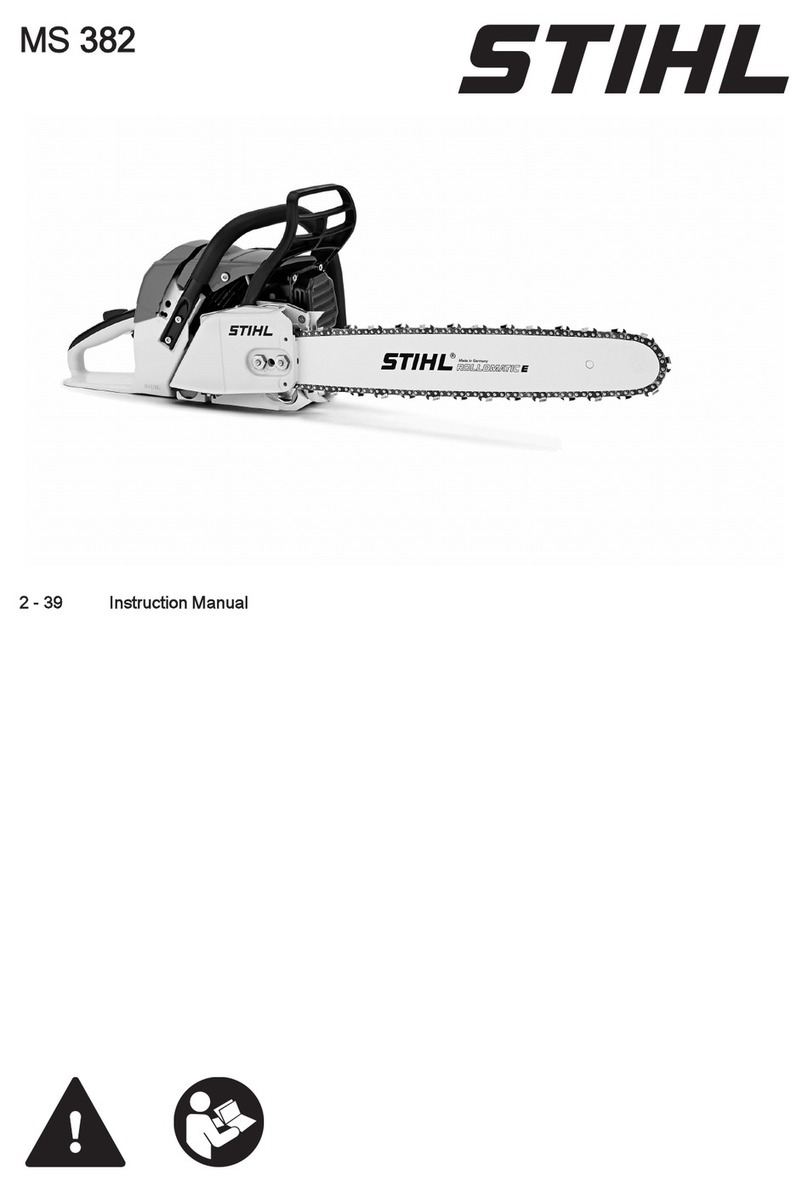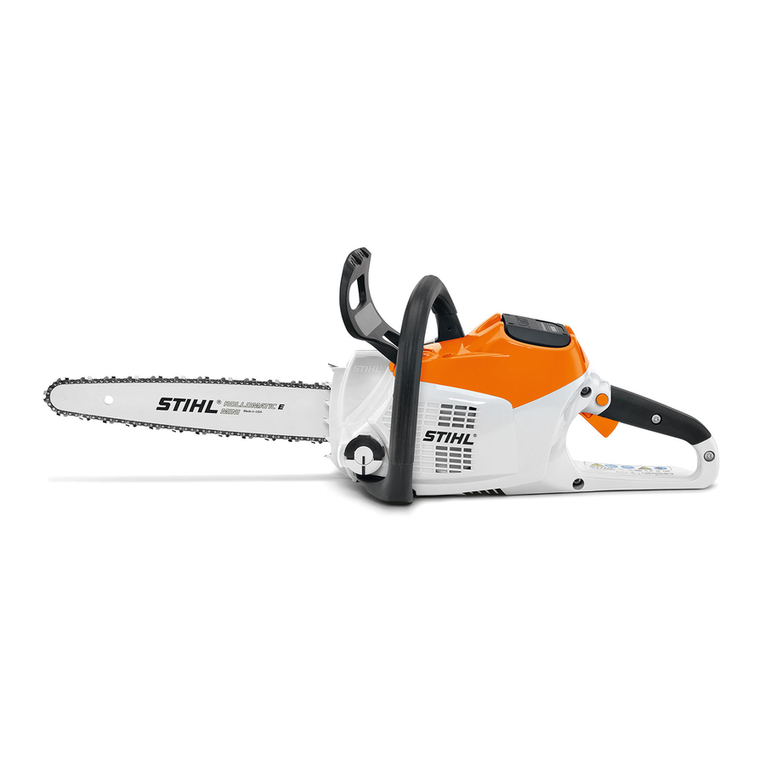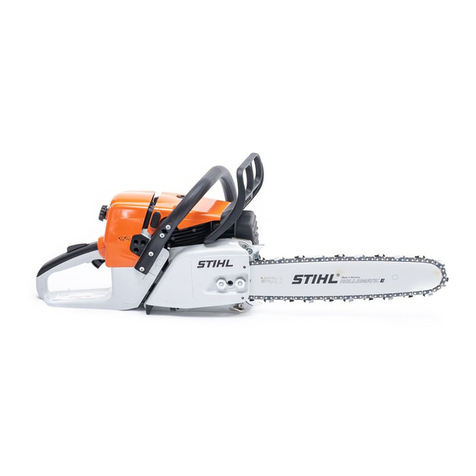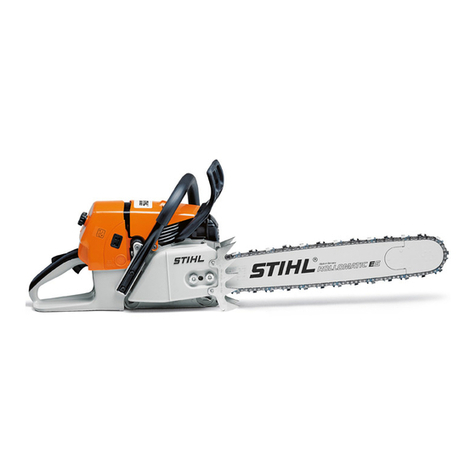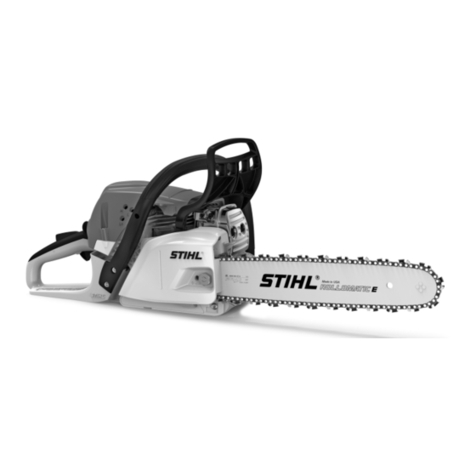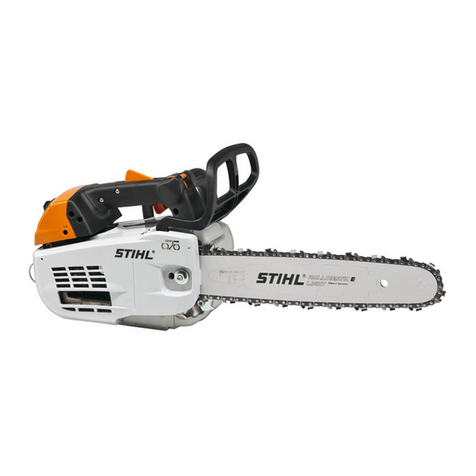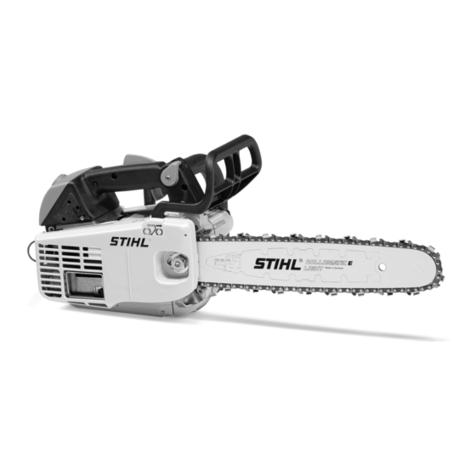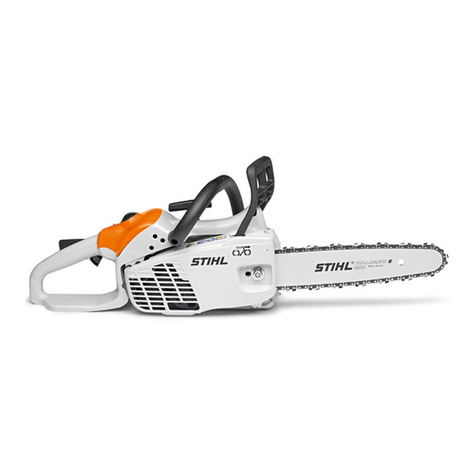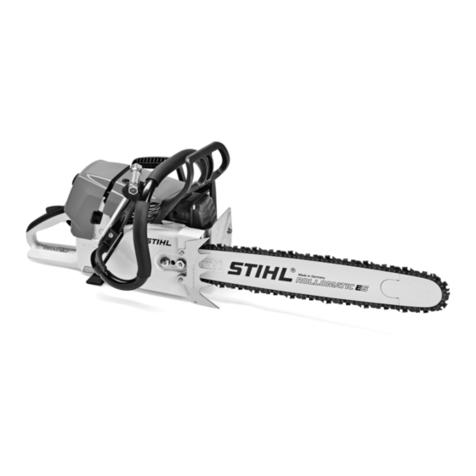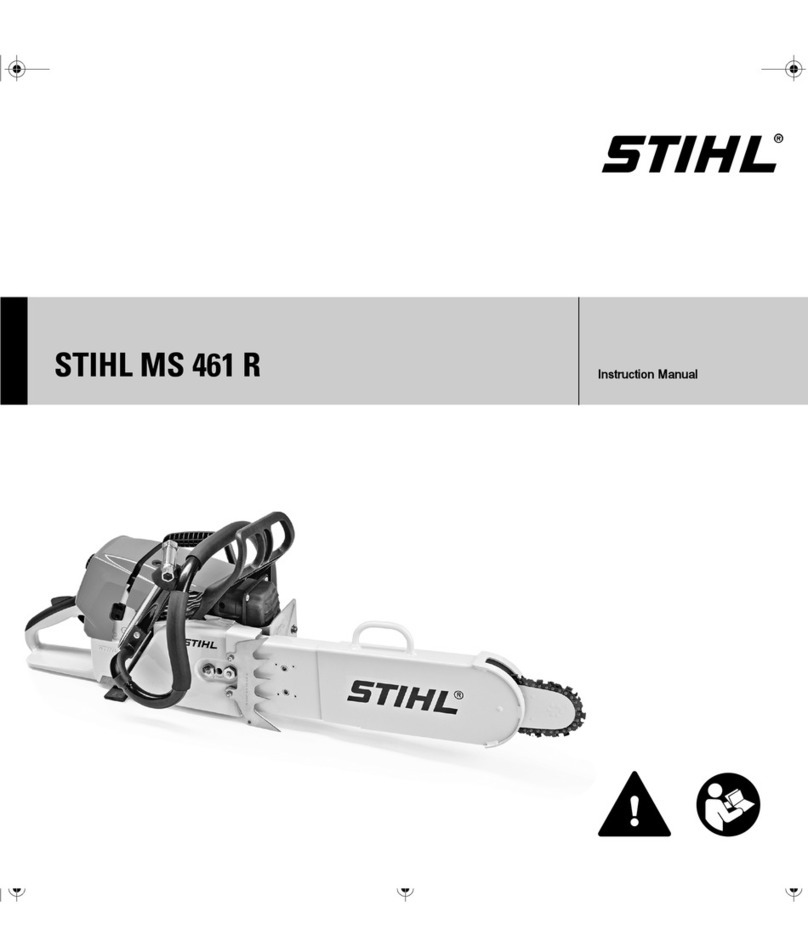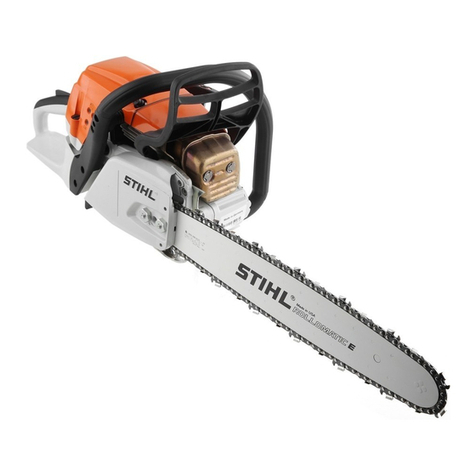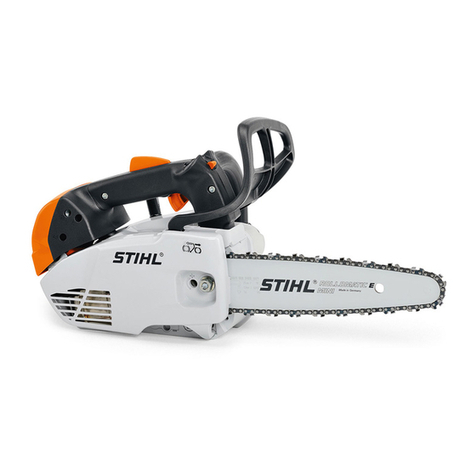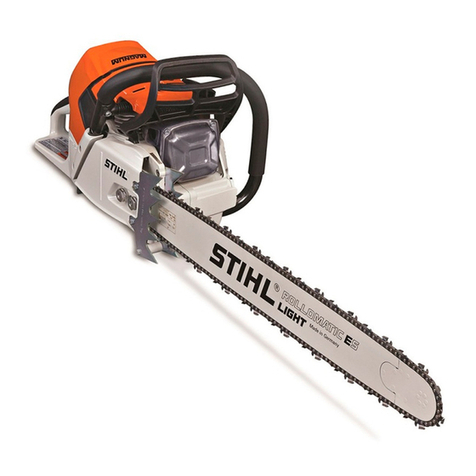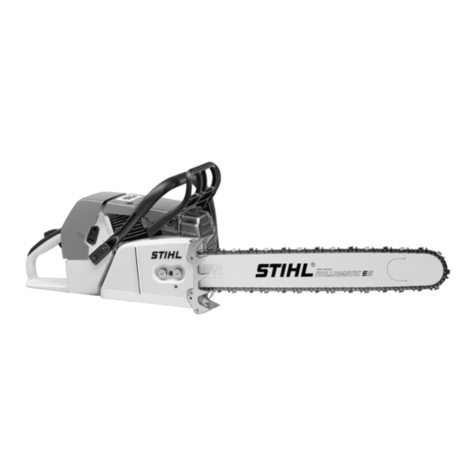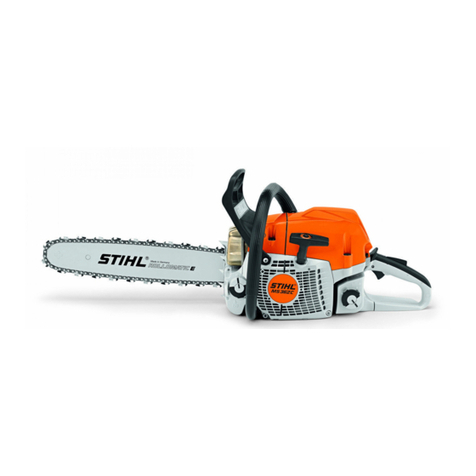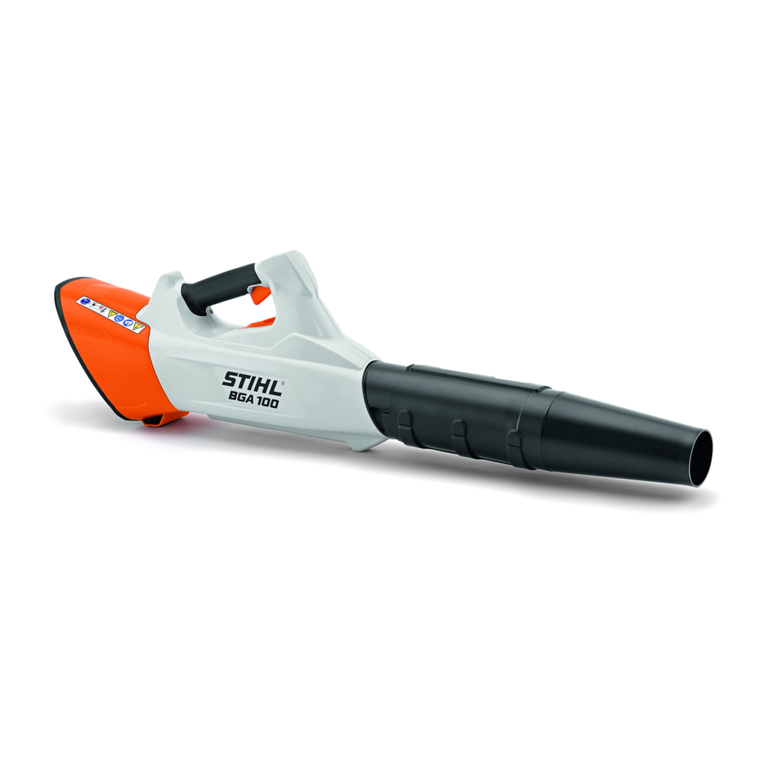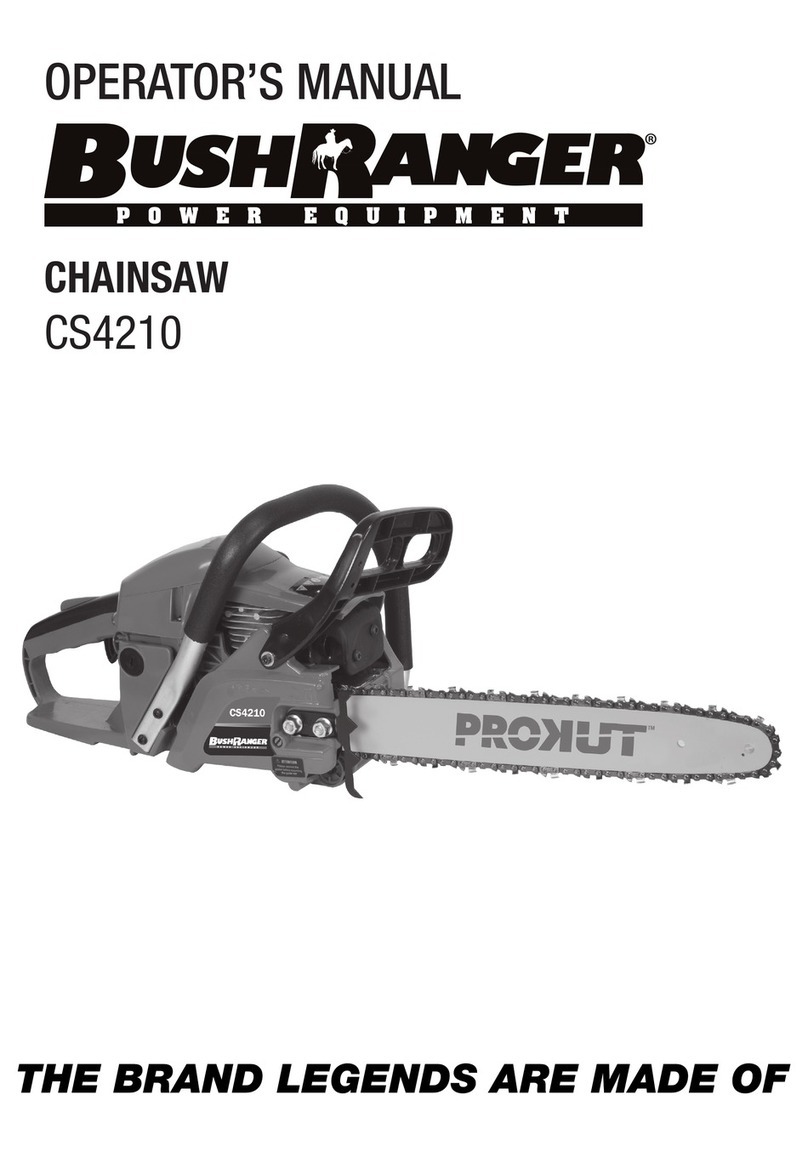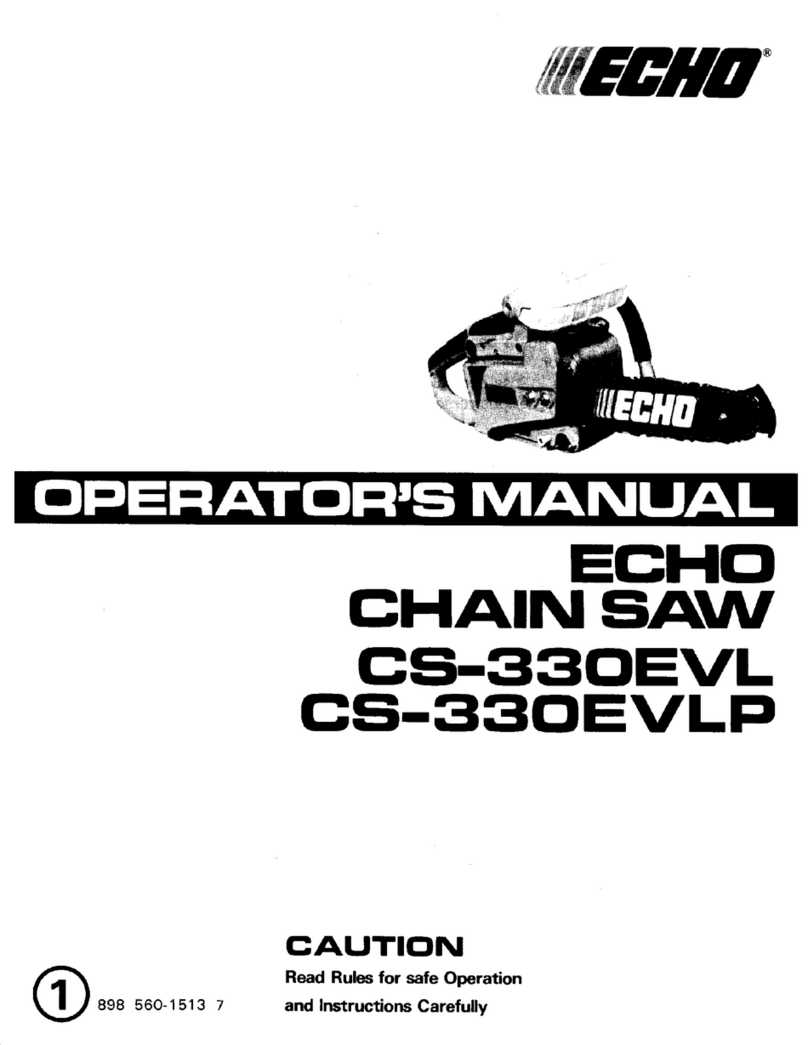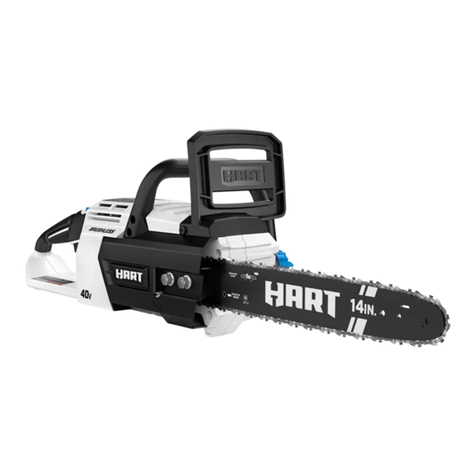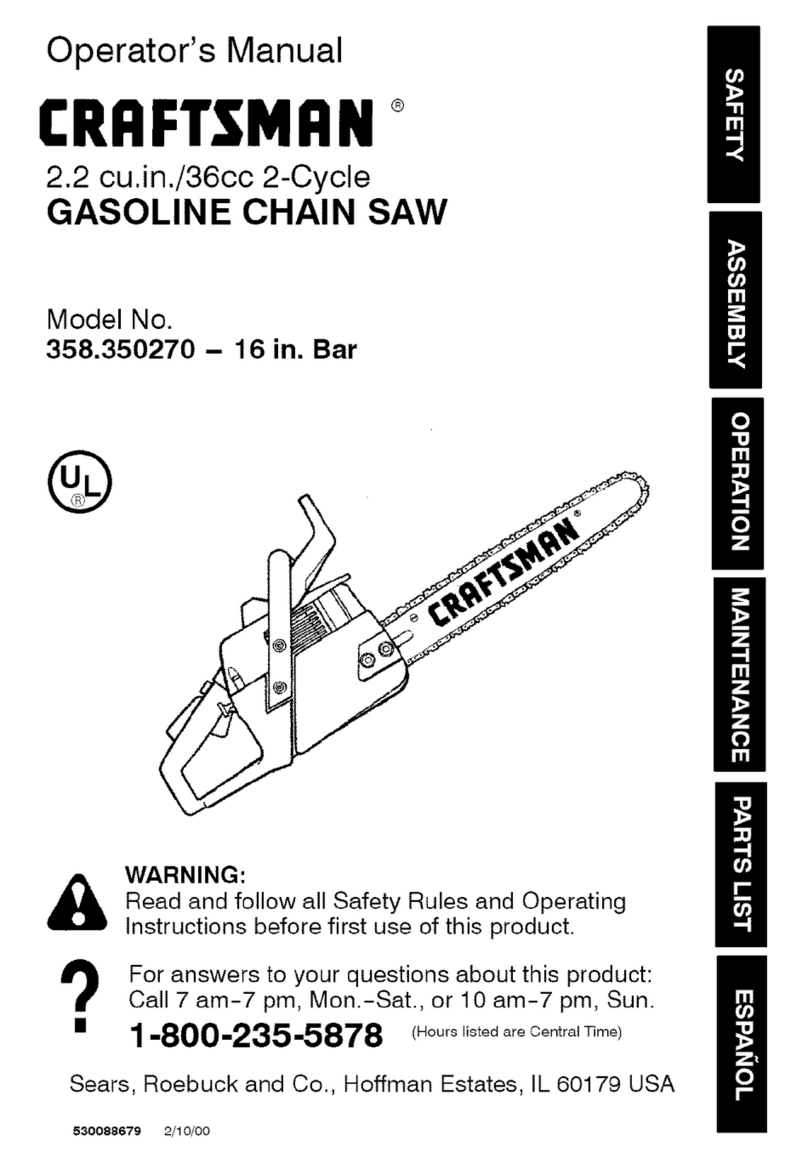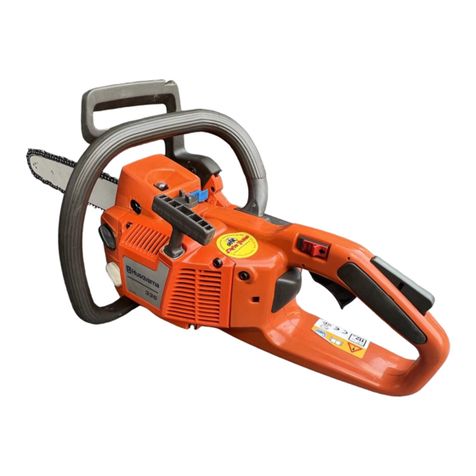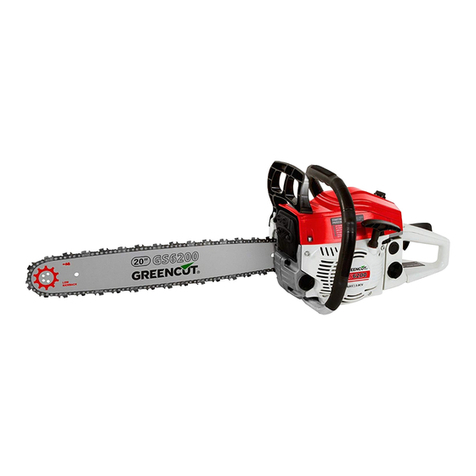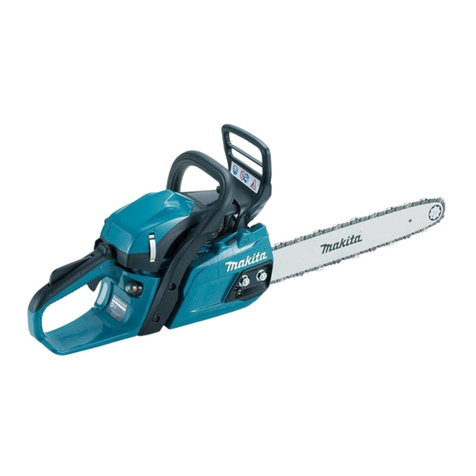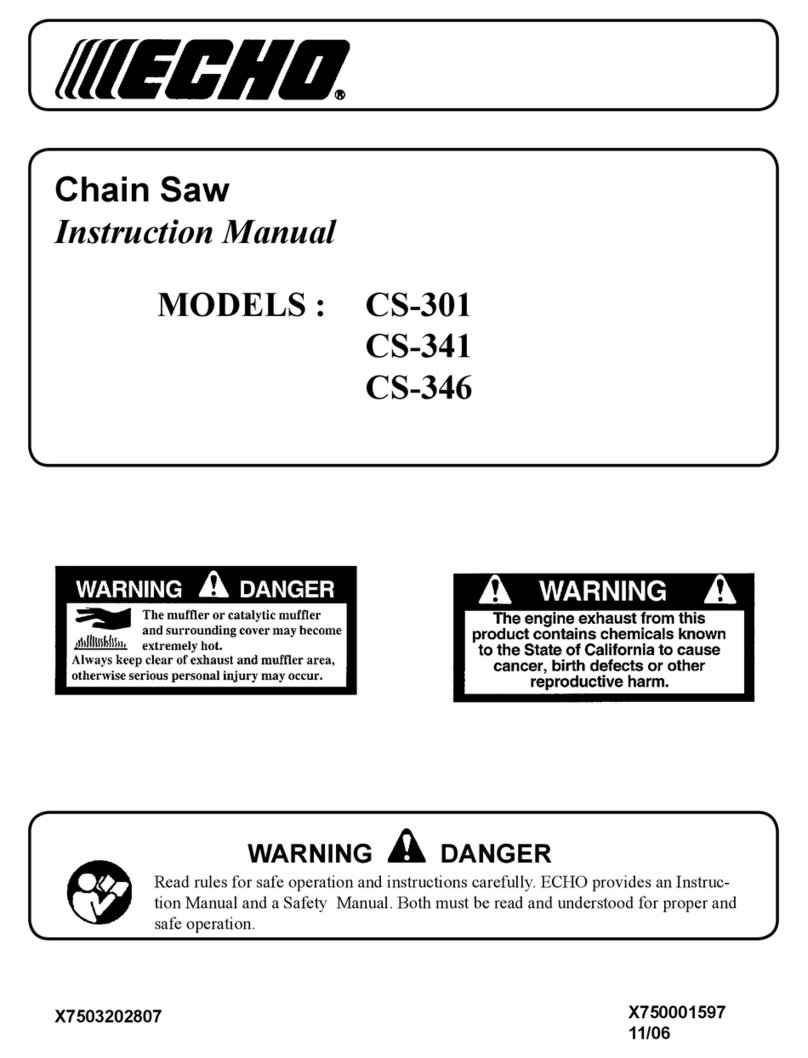
► Do not overreach. Keep proper footing and
balance at all times.
► Never switch on the chain saw when the
guide bar is in a cut or kerf. Doing so could
lead to reactive forces and injury. Instead,
remove the guide bar from the cut and re-
enter at full speed, taking care to avoid con‐
tacting any object with the tip of the guide
bar.
■The bumper spike is designed to provide
greater control of the chain saw while cutting.
If you work without the bumper spike, the
chain saw may pull you forward suddenly. This
could cause loss of control or, if the tip of the
guide bar strikes an object, kickback.
►Always work with the bumper spike to main‐
tain better control of the saw.
■ Applying pressure to the chain saw when
reaching the end of a cut may cause the bar
and rotating chain to accelerate out of the kerf,
go out of control and strike the operator or
some other object. To reduce the risk of injury:
►Use caution when approaching the end of a
cut.
► Never put pressure on the chain saw when
reaching the end of a cut.
5.5.3 Working Conditions
WARNING
■Operate your chain saw only under good visi‐
bility during favorable daylight conditions.
► Postpone the work if the weather is windy,
foggy, rainy or inclement.
► Never cut near power lines.
■ Your chain saw is a one-person machine.
► Do not allow other persons in the general
work area.
► Bystanders, especially children, and ani‐
mals should not be allowed in the area
where it is in use.
►Switch off the motor immediately if you are
approached.
■ To reduce the risk of injury to bystanders and
unauthorized users:
► Never leave the chain saw unattended
when the battery is inserted.
► Switch off the chain saw, engage the chain
brake and remove the battery during work
breaks and any other time the chain saw is
not in use.
■Sparks generated from the operation of the
chain saw may be capable of igniting combus‐
tible gases, liquids, vapors, dusts or other
combustible materials and substances. To
reduce the risk of fire and explosion:
►Never operate the chain saw in a location
where combustible gases, liquids, vapors,
dusts or other combustible materials and
substances are present.
►Read and follow recommendations issued
by government authorities (e.g., CCOHS)
for identifying and avoiding the hazards of
combustible gases, liquids, vapors, dusts or
other combustible materials and substan‐
ces.
■If a rotating chain strikes a rock or other hard
object, sparks may be created, which can
ignite flammable materials under certain cir‐
cumstances. Flammable materials can include
dry vegetation and brush, particularly when
weather conditions are hot and dry.
►When there is a risk of fire or wildfire, do
not use your chain saw around flammable
materials or around dry vegetation or brush.
►Contact your local fire authorities or the
Canadian Forest Service if you have any
question about whether vegetation and
weather conditions are suitable for the use
of a chain saw.
■Using this chain saw and sharpening its chain
can generate dust, oil mist and other substan‐
ces containing chemicals known to cause res‐
piratory problems, cancer, birth defects and
other reproductive harm.
►Consult governmental agencies such as
ECCC, CCOHS and PHAC and other
authoritative sources on hazardous materi‐
als if you are unfamiliar with the risks asso‐
ciated with the particular substances you
are cutting or with which you are working.
■Inhalation of certain dusts, especially organic
dusts such as mold or pollen, can cause sus‐
ceptible persons to have an allergic or asth‐
matic reaction. Substantial or repeated inhala‐
tion of dust or other airborne contaminants,
especially those with a smaller particle size,
may cause respiratory or other illnesses. This
includes wood dust, especially from hard‐
woods, but also from some softwoods such as
Western Red Cedar.
► Control dust (such as saw dust) and mists
(such as oil mist from chain lubrication) at
the source where possible.
►Always work with a properly sharpened
chain, which produces wood chips rather
than fine dust.
►To the extent possible, operate the chain
saw so that the wind or operating process
directs any dust, mist or other particulate
matter raised by the chain saw away from
the operator.
English 5 IMPORTANT SAFETY INSTRUCTIONS
10 0458-007-8201-B
